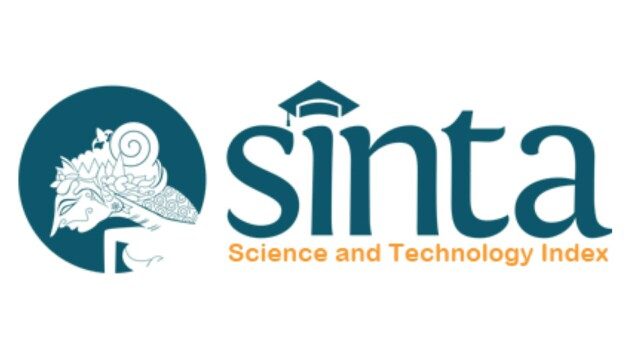Analisis Nilai Sensor untuk Penilaian Kualitas Aroma Kopi Kolombia
Sari
Kata Kunci
Teks Lengkap:
PDFReferensi
Barron, D., Pineau, N., Matthey-Doret, W., Ali, S., Sudre, J., Germain, J. C., Kolodziejczyk, E., Pollien, P., Labbe, D., Jarisch, C., Dugas, V., Hartmann, C., & Folmer, B. (2012). Impact of crema on the aroma release and the in-mouth sensory perception of espresso coffee. Food and Function, 3(9), 923–930. https://doi.org/10.1039/c2fo30046j Crnjar, R., Solari, P., & Sollai, G. (2023). The Human Nose as a Chemical Sensor in the Perception of Coffee Aroma: Individual Variability. Chemosensors, 11(4), 248. https://doi.org/10.3390/chemosensors11040248 DATA: 10 Negara Penghasil Kopi Terbesar di Dunia. (2024). Bumibogalaksmi.Com. https://www.inilah.com/negara-penghasil-kopi-terbesar-di-dunia Gamboa, J. C. R., & Acevedo, C. M. D. (2020). Dataset: Electronic Nose for Quality Control of Colombian Coffee through the Detection of Defects in “Cup Tests.” https://doi.org/10.17632/7spd6fpvyk.1 Gancarz, M., Dobrzański, B., Malaga-Toboła, U., Tabor, S., Combrzyński, M., Ćwikła, D., Strobel, W. R., Oniszczuk, A., Karami, H., Darvishi, Y., Żytek, A., & Rusinek, R. (2022). Impact of Coffee Bean Roasting on the Content of Pyridines Determined by Analysis of Volatile Organic Compounds. Molecules, 27(5), 1559. https://doi.org/10.3390/molecules27051559 Gancarz, M., Nawrocka, A., & Rusinek, R. (2019). Identification of Volatile Organic Compounds and Their Concentrations Using a Novel Method Analysis of MOS Sensors Signal. Journal of Food Science, 84(8), 2077–2085. https://doi.org/10.1111/1750-3841.14701 Gonzalez Viejo, C., Tongson, E., & Fuentes, S. (2021). Integrating a low‐cost electronic nose and machine learning modelling to assess coffee aroma profile and intensity. Sensors, 21(6), 1–16. https://doi.org/10.3390/s21062016 Harsono, W., Sarno, R., & Sabilla, S. I. (2020). Recognition of original arabica civet coffee based on odor using electronic nose and machine learning. In Proceedings - 2020 International Seminar on Application for Technology of Information and Communication: IT Challenges for Sustainability, Scalability, and Security in the Age of Digital Disruption, iSemantic 2020 (pp. 333–339). https://doi.org/10.1109/iSemantic50169.2020.9234234 Knysak, D. (2017). Volatile compounds profiles in unroasted Coffea arabica and Coffea canephora beans from different countries. Food Science and Technology (Brazil), 37(3), 444–448. https://doi.org/10.1590/1678-457x.19216 Lu, T., Sun, Y., Huang, Y., & Chen, X. (2023). Effects of roasting on the chemical compositions, color, aroma, microstructure, and the kinetics of changes in coffee pulp. Journal of Food Science, 88(4), 1430–1444. https://doi.org/10.1111/1750-3841.16516 Mesías, M., Barea-Ramos, J. D., Lozano, J., Morales, F. J., & Martín-Vertedor, D. (2023). Application of an Electronic Nose Technology for the Prediction of Chemical Process Contaminants in Roasted Almonds. Chemosensors, 11(5). https://doi.org/10.3390/chemosensors11050287 Palacín, J., Rubies, E., & Clotet, E. (2022). Application of a Single-Type eNose to Discriminate the Brewed Aroma of One Caffeinated and Decaffeinated Encapsulated Espresso Coffee Type. Chemosensors, 10(10), 421. https://doi.org/10.3390/chemosensors10100421 Rodríguez, J., Durán, C., & Reyes, A. (2010). Electronic nose for quality control of Colombian coffee through the detection of defects in “Cup Tests.” Sensors. https://doi.org/10.3390/s100100036 Rusinek, R., Siger, A., Gawrysiak-Witulska, M., Rokosik, E., Malaga-Toboła, U., & Gancarz, M. (2020). Application of an electronic nose for determination of pre-pressing treatment of rapeseed based on the analysis of volatile compounds contained in pressed oil. International Journal of Food Science and Technology, 55(5), 2161–2170. https://doi.org/10.1111/ijfs.14392 Suslick, B. A., Feng, L., & Suslick, K. S. (2010). Discrimination of complex mixtures by a colorimetric sensor array: Coffee aromas. Analytical Chemistry, 82(5), 2067–2073. https://doi.org/10.1021/ac902823w Tian, H., Li, F., Qin, L., Yu, H., & Ma, X. (2014). Discrimination of chicken seasonings and beef seasonings using electronic nose and sensory evaluation. Journal of Food Science, 79(11), S2346–S2353. https://doi.org/10.1111/1750-3841.12675 Zhang, D., Ji, H. W., Luo, G. X., Chen, H., Liu, S. C., & Mao, W. J. (2022). Insight into aroma attributes change during the hot-air-drying process of white shrimp using GC-MS, E-Nose and sensory analysis. Food Science and Technology (Brazil), 42. https://doi.org/10.1590/fst.70820 Zou, Y., Gaida, M., Franchina, F. A., Stefanuto, P. H., & Focant, J. F. (2022). Distinguishing between Decaffeinated and Regular Coffee by HS-SPME-GC×GC-TOFMS, Chemometrics, and Machine Learning. Molecules, 27(6), 1806. https://doi.org/10.3390/molecules27061806
DOI: https://doi.org/10.24176/simet.v16i1.13989
Refbacks
- Saat ini tidak ada refbacks.
Indexed by:





Simetris : Jurnal Teknik Mesin, Elektro dan Ilmu Komputer is licensed under a Creative Commons Attribution-NonCommercial-ShareAlike 4.0 International.
Dedicated to:














